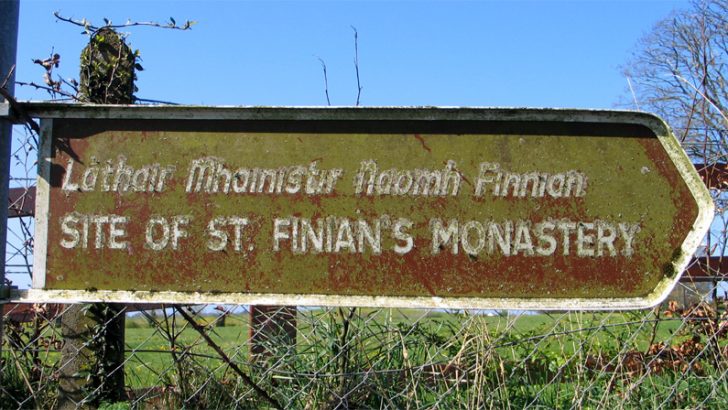Four Offaly Saints: The Lives of Ciarán of Clonmacnoise, Ciarán of Seir, Colmán of Lynally and Fíonán of Kinnitty
by Pádraig Ó Riain (Four Courts Press, €14.95)
Homilists and those interested in the early history of Ireland are indebted to Ó Riain for his splendid Dictionary of Irish Saints. For much of his professional life he has researched and written about St Finbar, patron of his native Cork. Here he surveys the lives of saints associated with the midlands, one well-known, St Ciarán of Clonmacnoise, the others not so well-known.
St Ciarán was born about 516 in an area in present-day Co. Roscommon. His father was a carpenter. He is said to have spent some time in captivity in Wales before escaping back to Ireland. In those earliest years he was a shepherd. Subsequently he was a student at St Finnian’s monastery at Clonard. About 534 he left Clonard and went to Inishmore on the Aran Islands, where he studied and was under the tutelage of St Enda.
Ordained
He was ordained and St Enda urged him to build a church and monastery in the middle of Ireland. About 544, after travelling to meet St Senan on Scattery Island, he settled in Clonmacnoise where, with ten other monks, he founded the famous monastery. As abbot he worked on the first buildings but soon died of a plague in his early 30s.
Not much information survives about the other three saints associated with Co. Offaly. St Ciarán of Seir was bishop of Seirkieran and is patron saint of the diocese of Ossory, whose major and minor seminaries were dedicated to him. He is sometimes identified with St Piran who is venerated in Cornwall, Wales and Brittany.
St Colmán of Lynally was an early abbot – about the 7th Century – the founder of a monastery at Lann and the patron saint of Lynn in Co. Westmeath. St Fíonán is more properly associated with Kerry, where he is credited with establishing the monastic settlement on Sceilig Mhichíl, near Ballinskelligs, and Innisfallen Abbey on an island in Lochléin, near Killarney.
In the narratives of the lives of all these saints there are accounts of incidents calculated to establish their credentials as wonder workers. The saints are frequently involved in healing a wide variety of illnesses and disabilities.
They exercise power over inanimate things and even raise people from the dead. Their miraculous powers mirror those exercised by Jesus in the New Testament narrative.
In this study the author first surveys the manuscripts and other sources which provide traditions on the four saints. For instance, the life of St Ciarán of Clonmacnoise survives in three Latin and two vernacular versions. He then opts for one of the versions and provides an English translation of it.
Essentially this is a manual for scholars. The author explains the background to the early lives of saints and he discusses the Martyrologies and Calendars, the dating of manuscripts, saints’ genealogies and territorial divisions. The book will be of interest to people living in areas associated with these saints.
However, for the most part the general reader is not aware of the literary devices intrinsic to hagiography, for instance, that miracle-working was a way of demonstrating a person’s authority and sanctity. Thus, many will probably struggle to understand these lives of the early saint in a human way, and may well be tempted to regard the over-blown narratives about them as somewhat absurd.



